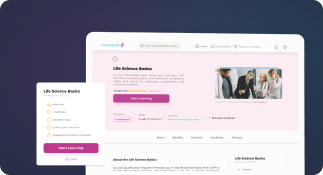Pharma Commercialization
Definition
Pharma commercialization refers to the comprehensive process through which a pharmaceutical product transitions from development to market availability. This includes strategic planning, regulatory approvals, pricing and reimbursement strategies, marketing, sales deployment, and lifecycle management. The goal is to ensure that the product reaches patients efficiently while meeting regulatory and market expectations.
The pharmaceutical commercialization process is critical for ensuring that innovative therapies not only gain approval but also achieve market success, patient adoption, and sustained revenue generation for the sponsoring company.
Detailed Explanation
Purpose and Importance
The pharmaceutical commercialization process bridges the gap between product development and patient access. After years of research and clinical trials, commercialization ensures that a product is launched effectively, priced appropriately, and positioned competitively in the healthcare market. It involves cross-functional collaboration among regulatory, medical affairs, marketing, sales, and market access teams.
Key Components of Pharma Commercialization
- Market Assessment: Identifying target patient populations, competitor analysis, and unmet medical needs.
- Regulatory Approval: Securing marketing authorization from agencies like the FDA (U.S.) or EMA (EU).
- Market Access and Pricing: Developing strategies for reimbursement, health technology assessments (HTA), and pricing negotiations.
- Launch Planning: Coordinating cross-functional teams to prepare for product launch, including sales force training, supply chain readiness, and stakeholder engagement.
- Marketing and Promotion: Creating compliant promotional materials and campaigns targeting healthcare providers and patients.
- Lifecycle Management: Expanding indications, geographic reach, and optimizing product use post-launch.
Examples and Contexts of Use
Pharma commercialization strategies vary depending on the therapeutic area, market maturity, and regulatory landscape. For instance:
- A biotech company launching its first orphan drug may focus on targeted education for specialists and patient advocacy partnerships.
- A large pharmaceutical firm introducing a biosimilar might emphasize payer negotiations and real-world evidence generation.
Commercialization is also influenced by regional regulatory frameworks. In the U.S., the FDA’s approval is followed by pricing discussions with insurers and pharmacy benefit managers. In Europe, companies must navigate country-specific HTA processes to secure reimbursement.
Challenges in Pharmaceutical Commercialization
- Regulatory Complexity: Varying approval and post-marketing requirements across regions.
- Market Access Barriers: Delays in reimbursement can hinder product uptake.
- Competitive Landscape: Differentiating the product in a crowded therapeutic area.
- Data Requirements: Need for real-world evidence and health economic data to support value propositions.
Best Practices for Successful Commercialization
- Engage stakeholders early, including payers, providers, and patients.
- Develop a robust value proposition supported by clinical and economic data.
- Ensure cross-functional alignment from development through launch.
- Invest in market research to refine positioning and messaging.
- Plan for post-launch monitoring and lifecycle optimization.



